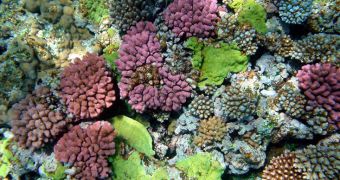According to the first investigation of its kind, it would appear that most of the world's “missing” plant species that experts have been unable to find until now are concentrated right under our noses, inside the world's renowned biodiversity hotspots.
The study unveiled equally good and bad news, researchers say. At this point, scientists know about the existence of no less than 336,000 species of flowering plants, but they say that the equivalent of 15 percent of this number is made up of species that have yet to be discovered.
The good news here is that most of these yet-unidentified species most likely live in regions that are already known for the fact that they are special, and are protected by conservationists. Naturally, this is not the case across the board, but experts believe that the majority of these species are safe.
However, the study did not reveal only pleasant surprises. “The bad news comes in that these places are under extreme threat,” explains scientist Lucas Joppa, who holds an appointment with Cambridge, England-based Microsoft Research.
The results of the study he and his team published appear in the July 4 issue of the esteemed journal Proceedings of the National Academy of Sciences (PNAS), Our Amazing Planet reports.
Unidentified species, the team says, may live in small pockets, or tight communities, at a variety of areas around the world. There is no way of finding all of them using standard scientific methods.
“These places aren't just places with a lot of species, they're places where habitat loss has occurred to an extreme. So we've prioritized these places, but the problem is even more serious than we thought. Instead of x number of species, it's x + y number of species,” Joppa explains.
It stands to reason that finding a species of bird which travels around the world is easier than detecting one which can only be seen in a very specific ecosystem, such as the islands of Galapagos or Madagascar, or narrow stretches of rainforest.
“This is the first model that acknowledges that the species discovery process has an inherent human element. So things like world wars, and other kinds of massive geopolitical unrest will change the number of species described,” the expert goes on to say.
“The more we know about ecosystems and they way ecosystems function, the more we know we don't know. So in the face of that immense uncertainty, it seems exceptionally foolhardy to be tinkering around with things that we don't fully understand,” he concludes.

 14 DAY TRIAL //
14 DAY TRIAL //